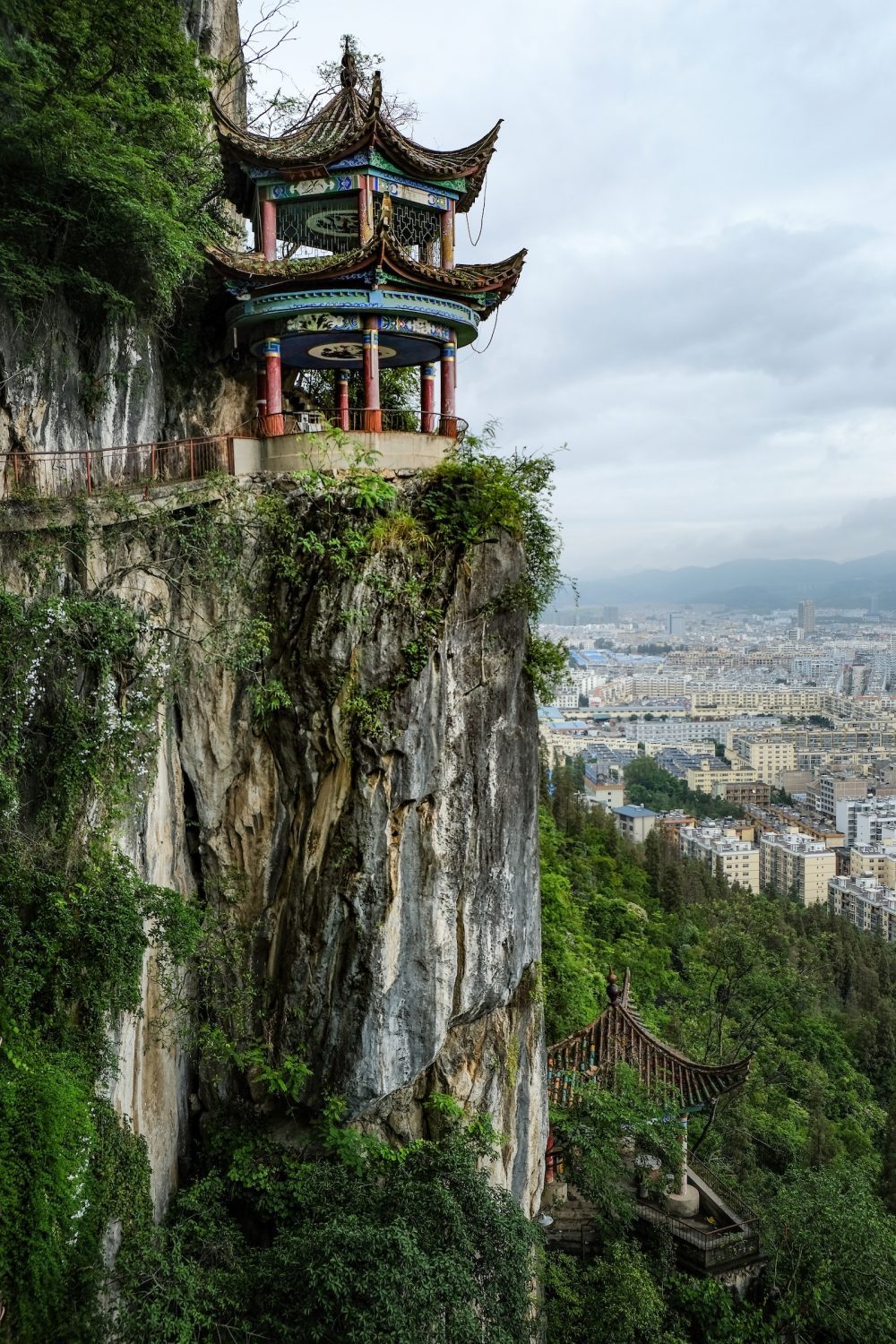In the south western corner of China, below the edge of the Tibetan plateau, mountainous Yunnan was largely untraveled and short on modern conveniences until about 30 years ago. Georgia Freedman, author of a new cookbook on the province’s cuisine called “Cooking South of the Clouds: Recipes and Stories from China’s Yunnan Province,” calls this province China’s “wild west.”
Listen to the latest episode of Milk Street Radio to hear her explain regional specialities—from sour-pickled bamboo to fried river weed—and how to get the best food recs. (Hint: Make friends with your taxi driver.) See below for a collection of excerpts from the show, and listen to the interview here.
On why she calls Yunnan “China’s Wild West”
Yunnan is in the southwestern corner of China. It is sort of below the edge of the Tibetan plateau and next to Myanmar and Laos and Vietnam, and it also borders Sichuan. The people who lived in Yunnan historically were not the Han majority of the rest of China. They were minority groups, dozens and hundreds of them, that had been pushed up into the mountains through war and displacement over the course of centuries. It’s very mountainous, so there wasn't a lot of connection to the rest of China.
A lot of what we consider sort of modern conveniences didn't make it out to Yunnan. It wasn't as economically developed until the last 30 years or so. There were still a lot of dirt roads and the electricity was a bit spotty. So it’s an area that people haven't really traveled to as much. It hasn't had as much economic growth as other parts of China and as a result, it doesn't feel quite like the rest of the country. There's still a real sense, especially right now, that anything is possible.
On regional dishes throughout Yunnan
North: In the North, you're up on the edge of the Tibetan plateau, and it gets cold. There's certainly more vegetables and more vegetation than in other parts of Tibet. You get a lot of cold weather dishes like deep fried ribs with a chili bean sauce, on top of deep fried mint. And a lot of potato dishes—big potato pancakes the size of a plate.
South: All the way down south, you're on the edge of Laos and you've got a lot of dishes that feel a lot like you would eat in northern Laos. There's fried river weed from the Mekong, and a lot of dishes that are just grilled on an open fire, like fish that's been stuffed with fresh herbs and fresh chilies.
West: If you are out in the West, by the border with Myanmar, you really taste a lot of the foods that are influenced by Myanmar. That border wasn't settled until the sixties, so there's a lot of cross cultural trade and groups are on either side of the border. There are a lot of dishes that have a lot of very bright herbs in them, a lot of chilies also, and a lot of sour-pickled bamboo, which has this sort of funky flavor that's really nice. It pairs with meats or other vegetables.
East: As you head east you get dishes that are much more traditionally Chinese—things that have oyster sauce in them, depending on which part of the province they're bordering. Then up near Sichuan, you get a lot of Sichuan peppercorns. There are lots of pickles everywhere; central Yunnan foods have a lot of pickles especially, and a lot of dried chilies.
On Yunnan’s most famous dish
Yunnan’s most famous dish is Crossing the Bridge Rice Noodles. It comes to the table in parts. You get a massive bowl of broth and you get lots of little dishes full of the ingredients, so there will be some quail eggs and some raw meats and some fish and some very thinly sliced ham and some vegetables and some mushrooms and some tofu skin. And next to that, a bowl of rice noodles. The broth comes so steaming hot to the table that you start adding the ingredients in, starting with the things like the raw meats and egg, and you stir as you add them and they cook in the heat of the broth. By the end, you have this really fragrant soup with a dozen ingredients in it that really tastes like nothing else.
On a great source of local recommendations
I'd pop [into a cab] and one of the first things [the cab driver] would ask would be you know, “Do you like the food here?” And as soon as I said I enjoyed the food, I'd get a bunch of recommendations of places to go, and had I eaten this particular dish, and had I tried the ham from this particular place. So talking about food is a really great way of opening up the conversation.
This interview has been edited for clarity.



